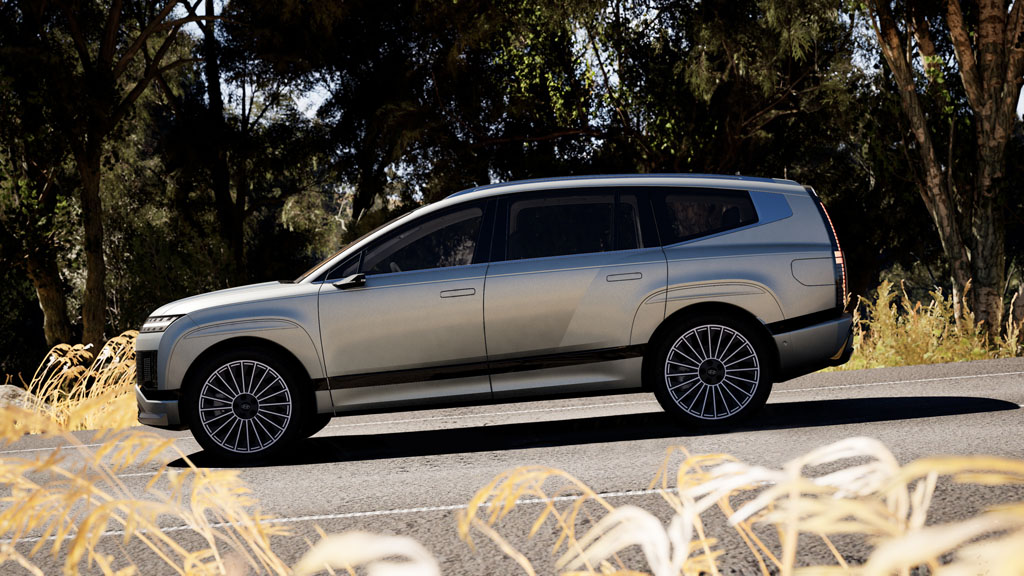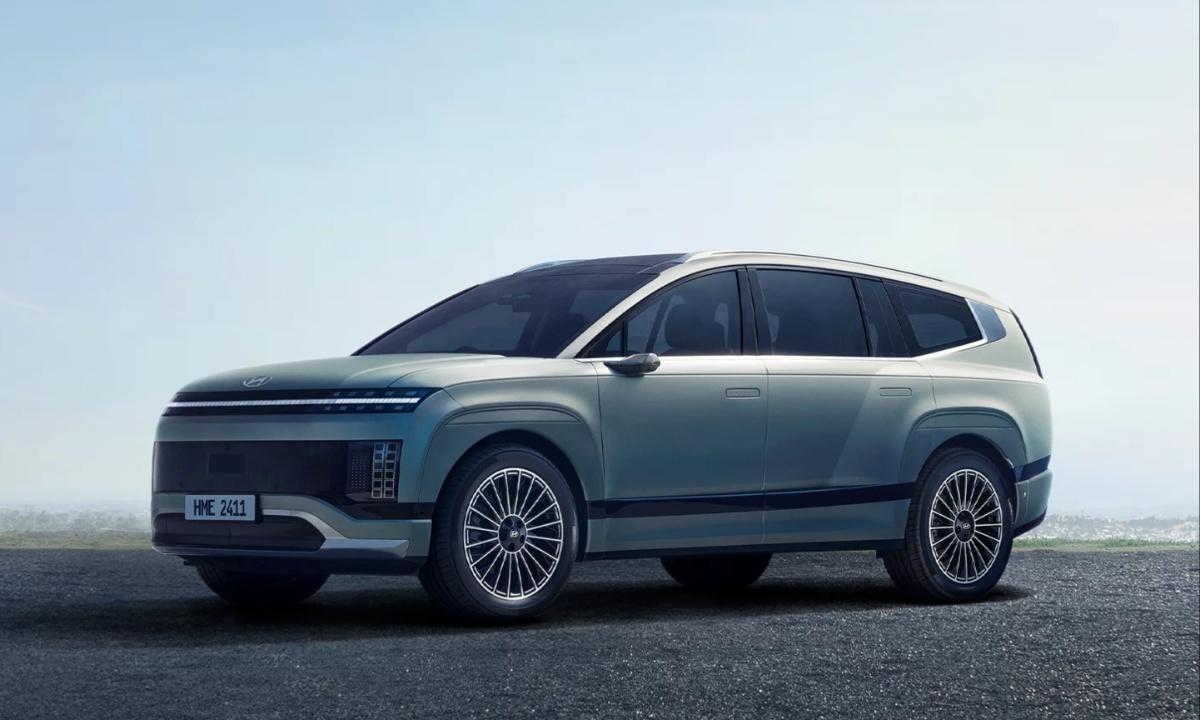Hyundai has officially revealed the 2026 Ioniq 9, expanding its all-electric lineup to include this large three-row SUV. The Ioniq 9 joins the Ioniq 5 and Ioniq 6 as part of Hyundai’s push into electric vehicles, offering a more spacious and family-friendly option. The design of the Ioniq 9 is based on the 2021 Hyundai SEVEN concept, with a boxy shape and confident stance that reflects Hyundai’s vision for larger electric SUVs. Alongside the debut, Hyundai introduced new paint options, including Celadon Gray Matte and Cosmic Blue Pearl, with front lighting designs that continue the brand’s signature pixelated style.
The Ioniq 9 stands out for its size, being almost 15 inches longer than the Ioniq 5. Despite its larger dimensions, the rear-wheel-drive long-range model can achieve up to 335 miles of range, thanks to a 110-kWh battery. However, the bigger size means a slight dip in efficiency, with the Ioniq 9 delivering 97 MPGe, lower than the Ioniq 5’s performance. The vehicle is available in various configurations, including rear-wheel and all-wheel drive, with performance models accelerating from 0 to 60 mph in as little as 4.9 seconds. It also features aluminum fenders for a lighter body, contributing to better overall efficiency.

Inside, the Ioniq 9 emphasizes cutting-edge technology and ample space. The cabin features a dual 12-inch curved display for a total of 24 inches of screen real estate, offering a futuristic dashboard. The car also introduces a new AI Assistant system, allowing drivers to interact with the vehicle through voice commands. Hyundai has eliminated the traditional roof antenna as part of the vehicle’s sleek, aerodynamic design, contributing to its minimalist aesthetic. The interior layout is spacious, with a flat floor and a panoramic roof that enhances the feeling of openness.
The Ioniq 9’s interior is designed with practicality in mind, providing significant room for passengers and cargo. The SUV offers up to 46.7 cubic feet of trunk space when the third-row seats are folded, and it features a 3.1 cubic-foot frunk for additional storage. A standout feature is the “Universal Island 2.0” sliding system, which allows for easy access to the front row and adds to the vehicle’s versatility. The second and third rows include swiveling seats that can face each other when the car is parked, creating a more social and comfortable environment for passengers.
While the Ioniq 9 has generated significant anticipation, it won’t be available until the first half of 2025, with initial sales targeted for South Korea and the U.S. before expanding globally. It will be showcased at the 2023 LA Auto Show before it officially hits the market. Given the increasing demand for larger SUVs, particularly those with electric powertrains, the Ioniq 9 is expected to appeal to families looking for a spacious, eco-friendly vehicle. The model’s success will depend on competitive pricing, particularly in comparison to vehicles like the Kia EV9, which starts at $56,395. If Hyundai can price the Ioniq 9 competitively, it could become a strong contender in the growing electric SUV market.

